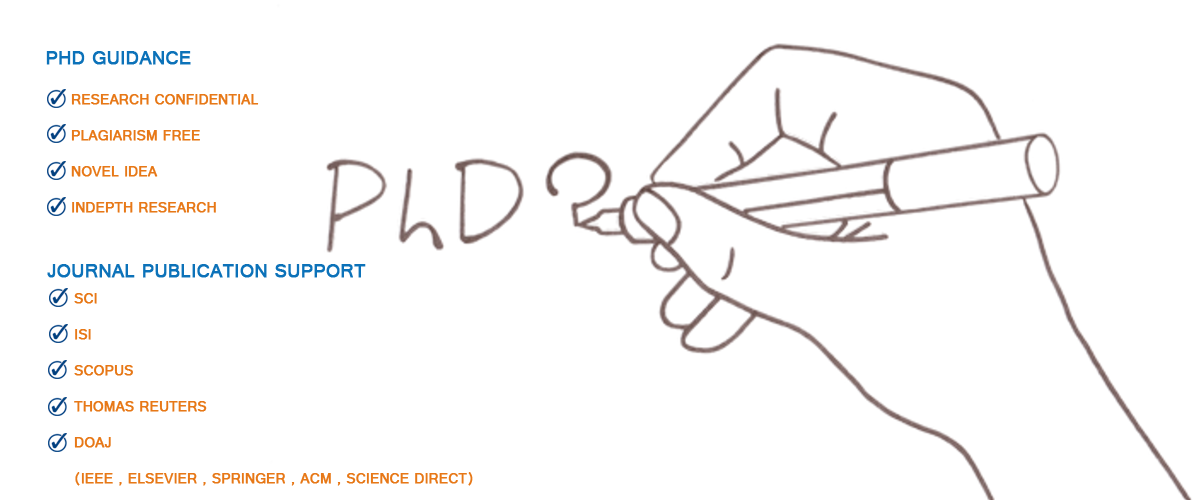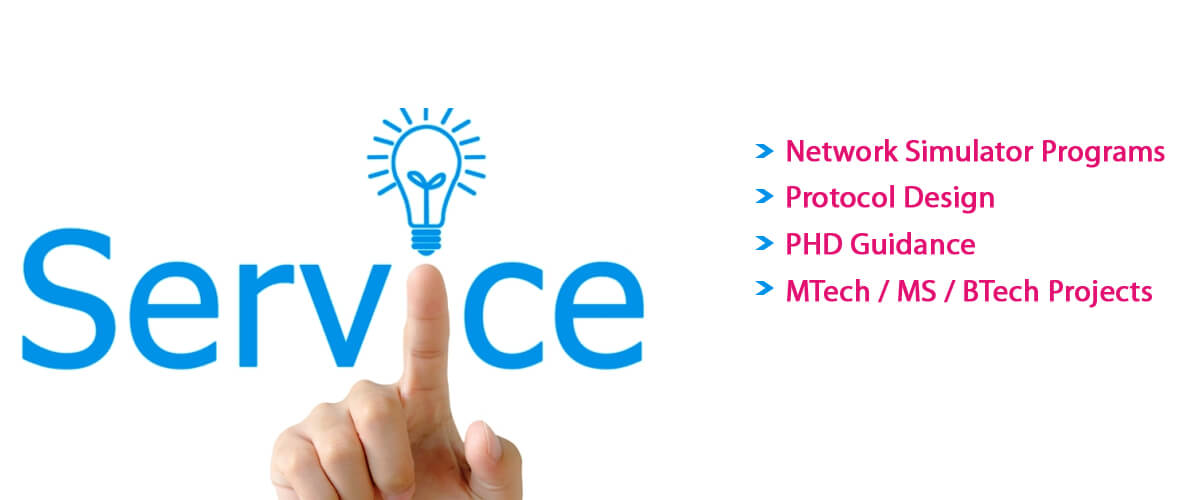Final Year Network Communication Project Thesis Computer Science
Final Year Network Communication Project Thesis Topics in Computer Science that can elevate your project to next level. Get in touch with us we will guide you with detailed explanation and best project results. The process of creating a thesis project is considered as complicated as well as captivating. We offer numerous plans and instructions for developing an effective thesis project in network-based topics:
- Advanced Network Security Solutions
- Project Plan: In wireless networks or Internet of Things (IoT) devices, solve certain susceptibilities through constructing an advanced network security framework.
- Thesis Aim: The main focus of the thesis is to perform the process of extensive examining and assessment in opposition to recognized security assaults, exploration of previous security protocols, and creation and deployment of the novel approach.
- Performance Analysis of Networking Protocols
- Project Plan: In comparison with conventional protocols such as TCP/IP, we intend to carry out an extensive performance analysis of progressing networking protocols such as QUIC.
- Thesis Aim: Extensive assessment of outcomes with conceptual assistance, empirical arrangement, and methodology for gathering and examining data.
- IoT Network Optimization
- Project Plan: For improving transmission of data and energy effectiveness in IoT networks, our team plans to model and utilize efficient methods.
- Thesis Aim: It offers demonstration of limitations in IoT networks, simulation and outcomes analysis, and algorithm model.
- 5G Network Technologies
- Project Plan: In 5G networking, we focus on exploring novel mechanisms like beamforming or network slicing and their realistic applications.
- Thesis Aim: The main goal of this thesis is to provide a summary based on 5G technology, empirical outcomes, research methodology, and possible impacts for upcoming networks.
- Software-Defined Networking (SDN)
- Project Plan: In order to improve network adaptability and management, it is significant to develop an SDN-based application or approach.
- Thesis Aim: The creation procedure of the application, evaluation, exploration of its influence on the network effectiveness, and contextual information on SDN.
- Vehicular Ad-Hoc Networks (VANETs)
- Project Plan: Through the utilization of VANETs, enhance traffic effectiveness and protection by creating suitable approaches.
- Thesis Aim: It offers a contextual framework on VANETs, model and deployment of our approach, evaluation of its performance, and crucial limitations.
- Network Simulation and Modeling
- Project Plan: As a means to design and examine activities of a network under different scenarios, it is beneficial to employ network simulation tools such as OMNeT++ or NS2/NS3.
- Thesis Aim: The process of extensive simulation configuration, designing technique, thorough exploration, and outcomes are the main consideration of this thesis.
- Cloud Networking
- Project Plan: Generally, to improve effectiveness of data centers, we intend to construct cloud networking approaches like load balancing or resource allocation policies.
- Thesis Aim: This thesis demonstrates the recent condition of cloud networking, our suggested approach, assessment outcomes, and deployment.
- Wireless Sensor Networks (WSNs)
- Project Plan: For certain applications such as smart agriculture or ecological tracking, it is advisable to model a WSN framework in an effective manner.
- Thesis Aim: An explicit description based on WSNs, system model, possible influence, deployment, and limitations are
- Machine Learning in Network Optimization
- Project Plan: As a means to enhance network effectiveness, our team focuses on implementing machine learning approaches like predictive analysis for traffic management.
- Thesis Aim: It provides a summary of machine learning in networking, our technique, comparative analysis, and outcomes in an explicit manner.
Writing the Thesis
- Introduction: The issue and major goals of our project ought to be explained in an explicit manner.
- Literature Review: It is approachable to outline previous studies. The gaps that are solved by our project have to be recognized.
- Methodology: The procedures, techniques, and tools which are employed in our project must be defined.
- Results: By means of suitable data and exploration, we plan to depict the outcomes of our project.
- Discussion: Typically, by describing the challenges and crucial impacts of the findings, it is significant to explain it.
- Conclusion: The major outcomes should be outlined. For upcoming investigation, we focus on recommending effective regions.
- References: In this segment, every educational source that is referenced to in our thesis ought to be mentioned.
Hints for Accomplishment
- Select a Significant Topic: A topic must be chosen in such a manner which coordinates with our professional passions and recent business tendencies.
- Obtain Feedback: For obtaining beneficial suggestions, discuss with our peers or advisor on a regular basis.
- Realistic Application: We plan to depict the realistic application of our project whenever it is probable.
- Documentation: An extensive document of our study and advancement procedures ought to be maintained.
- Peer Analysis: In networking, we intend to obtain valuable suggestions from professionals or mentors.
How should references and citations be formatted in a computer science term paper?
According to the citation format provided by your advisor, educational university, or the journal you are intending to submit, the structuring of the citations and references in a computer science term paper is determined. We recommend the most usual citation formats that are utilized in the domain of computer science are:
- APA (American Psychological Association) Style
- In-text Citation: It includes publication year and last name of author. Instance: (Smith, 2020).
- Reference List: The name of author, year of publication, title of work, and details of publication are encompassed.
- Instance:
scss
Smith, J. (2020). Title of the Book. Publisher.
- IEEE (Institute of Electrical and Electronics Engineers) Style
- In-text Citation: According to a numbered list at the final phase of the paper, it represents a statistical reference. Instance: [1].
- Reference List: Depending on the sequence of exhibition of the text, the reference list of IEEE must be a numbered list.
- Instance:
csharp
[1] J. Smith, “Title of the article,” in Title of the Journal, vol. 10, no. 2, pp. 100-110, 2020.
- ACM (Association for Computing Machinery) Style
- The structuring of the reference list in ACM is specific. Whereas for in-text citation, it is relevant to APA.
- Instance:
yaml
Smith, J. 2020. Title of the Article. Journal Name 10, 2 (April 2020), 100-110.
- MLA (Modern Language Association) Style
- In-text Citation: By not including a comma, mention the last name of the author and page number. Instance: (Smith 100).
- Reference List: It includes the name of the author, title of the work, and information of publication.
- Instance:
yaml
Smith, John. Title of the Book. Publisher, 2020.
- Chicago Style
- For citing sources, Chicago style encompasses two techniques. They are Author-date which is usual in studies of social science, physical, and natural, and Notes and Bibliography that is general in the arts, literature, and history fields.
- In-text Citation (Author-Date): In Chicago style, the in-text citation is relevant to APA. Instance: (Smith 2020).
- Reference List (Author-Date): Generally, reference list is in the style of APA.
- Instance:
yaml
Smith, John. 2020. Title of the Book. City: Publisher.
Common Instructions:
- Reliability: All over our paper, we must adhere to a particular citation format.
- Precision: We seize every essential information such as titles, year of publication, authors, and pages. The process of assuring this is considered as significant.
- Structuring: Inherently as demanded by the particular format, focus on capitalization, punctuation and italic style.
Significant Tools for Citation Management:
- Zotero
- CiteULike
- EndNote
- Mendeley
- LaTeX/BibTeX (Specifically, for managing bibliographies in documents, these tools are highly prevalent in the domain of computer science)
These tools are capable of making the procedure more effective and less complicated to maintain by assisting in handling and structuring references and citations on the basis of different formats.
We have suggested many plans and instructions for constructing a robust thesis project in network-related topics. As well as the most familiar citation formats which are employed in the field of computer science are provided by us explicitly in this article.
Ns2 Final Year Projects Writing Service
Ns2 Final Year Projects Writing Service that are difficult to make it out from scholar’s end are worked by us, drop us all your research details we will help you with best results.
- Route Aware Dynamic Channel Scheduling and Selection for Multi-Hop Cognitive Radio Networks
- Multi-Agent Q-Learning for Competitive Spectrum Access in Cognitive Radio Systems
- Opportunistic band sharing for point-to-point link connection of cognitive radios
- Diversity antenna with electronically switchable wide/narrow band for cognitive radio systems
- Improved Energy Detectors for Cognitive Radios With Randomly Arriving or Departing Primary Users
- Dynamic Spectrum Access in Cognitive Radio Networks Using Deep Reinforcement Learning and Evolutionary Game
- Residual Energy Analysis with Physical-Layer Security for Energy-Constrained UAV Cognitive Radio Systems
- Performance Analysis of Wireless Energy Harvesting Cognitive Radio Networks Under Smart Jamming Attacks
- Downlink Resource Management Based on Cross-Cognition and Graph Coloring in Cognitive Radio Femtocell Networks
- Improved hard-decision fusion algorithm against SSDF in cognitive radio networks
- A Joint Design of User Modeling and Resource Management in Cognitive Radio Networks
- A differential game theoretic model for real-time spectrum pricing in cognitive radio networks
- Joint power and channel allocation for outage probability minimization in cognitive radio ad hoc networks
- Markov-Based Optimal Access Probability for Dynamic Spectrum Access in Cognitive Radio Networks
- Per-node based optimal power control for multi-hop cognitive radio networks
- Cognitive networking with opportunistic routing in Wireless Sensor Networks
- Multiobjective cooperative spectrum sensing in cognitive radio using cat swarm optimization
- A Strategic Power Allocation Scheme for Opportunistic Communication in Cognitive Radio Networks
- Voice Capacity of Cognitive Radio Networks for Both Centralized and Distributed Channel Access Control
- Performance modelling and analysis of the delay aware routing metric in Cognitive Radio Ad Hoc networks







